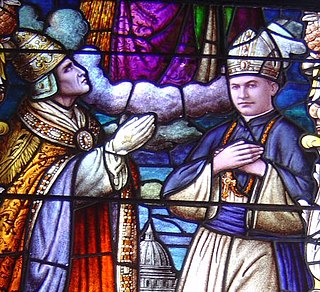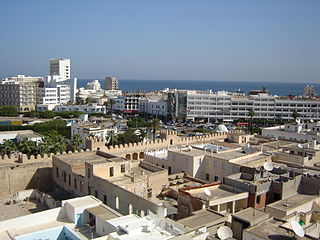
Sousse or Soussa is a city in Tunisia, capital of the Sousse Governorate. Located 140 km (87 mi) south of the capital Tunis, the city has 271,428 inhabitants (2014). Sousse is in the central-east of the country, on the Gulf of Hammamet, which is a part of the Mediterranean Sea. Its economy is based on transport equipment, processed food, olive oil, textiles, and tourism. It is home to the Université de Sousse.
Byzacena was a Late Roman province in the central part of Roman North Africa, which is now roughly Tunisia, split off from Africa Proconsularis.

Djémila, formerly Cuicul, is a small mountain village in Algeria, near the northern coast east of Algiers, where some of the best preserved Berbero-Roman ruins in North Africa are found. It is situated in the region bordering the Constantinois and Petite Kabylie.

Haïdra is a municipality in western Tunisia, containing the ruins of Ammaedara, one of the oldest Roman cities in Africa. It was a diocese and is now a Roman Catholic titular see.
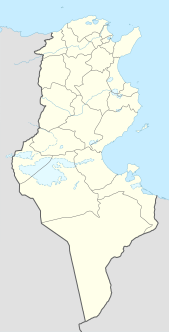
Chebba is a small city in the Mahdia Governorate of Tunisia in North Africa on the coast of the Mediterranean Sea.
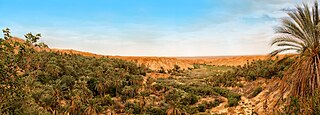
Negrine is a town and commune in Tébessa Province in north-eastern Algeria. It was the site of ancient Casae Nigrae, a settlement of Roman North Africa with an attached bishopric that remains a Latin Catholic titular see.

The Titular Bishopric of Vita (Vitensis) was a Roman–Berber civitas in Africa Proconsularis. It is a former Christian diocese and Latin Catholic titular see. The name Vita means life.
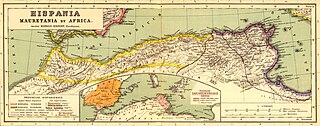
Mutugenna or Muttegena was a colonia (town) of the Roman, Berber and Vandal empires, located in the Maghreb. The city is generally identified with the ruins at Ain-Tebla in modern Algeria. Mutugenna was also the locus of a bishopric and was an important site in the development of the Donatist schism.
Zattara was an ancient Roman and Byzantine town in the Africa province. It was located in present-day Kef ben-Zioune, south-east of Calama, Algeria. The city was a titular see of the Roman Catholic Church.
Centuria, also known as Centuriensis, was a Roman era town in Numidia, Roman province of Africa. It has been tentatively identified with ruins near Ain El Hadjar in Algeria, south of Saida.

Vallitanus or Vallis was an ancient Roman–Berber colonia in Carthage, Tunisia. The town is identified with ruins at Sidi Medien, where are located the remains of a Roman theatre, and a number of Roman inscriptions bearing witness to the town's name, and some local officials of the time can be found near the theatre.

Abbir Germaniciana also known as Abir Cella is the name of a Roman and Byzantine-era city in the Roman province of Africa proconsularis. The city was also the seat of a bishopric, in the ecclesiastical province of Carthage, and is best known as the home town of the Pre Nicaean father, Cyprian, who was bishop of Abbir Germaniciana around 250AD.

Abthugni was an ancient city in Roman North Africa at present day Suwar (Henchir-es-Souar) in Tunisia. It was in Roman times in the province of Africa Proconsularis, Africa, and latter in Byzacena. In late antiquity Abthugni was also the seat of a bishop, and the diocese is a titular see of the Roman Catholic Church to this day.
Avioccala was a Roman and Byzantine era town in the Roman province of Africa Proconsularis in northern Tunisia. The town lasted from 30BC to about 640AD, and has been tentatively identified with the stone ruins at Sidi-Amara, Tunisia.
Tacarata, was an ancient Roman era oppidum (town) in the Roman-Berber province of Numidia. It is identified with ruins in the territory of Mila or Annaba in modern Algeria.
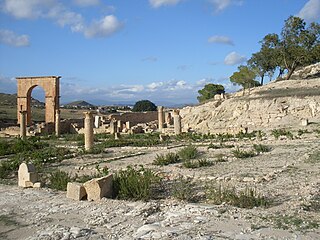
Pheradi Majius is a locality and archaeological site in Tunisia located at 36.250003°N 10.397047°E near the modern town of Sidi Khalifa in Sousse Governorate, Tunisia that is located at 36° 14′ 58″ N, 10° 23′ 57″E.
Bagai was a Roman–Berber city in the province of Africa Proconsularis. It must have been of some reasonable size, as it was also the seat of an ancient Catholic bishopric. The ancient city has been identified with ruins at Ksar-Bagaï outside of Baghai, in the Aurès Mountains of the El Hamma District in Khenchela Province, Algeria.

Utimma was an ancient city in the Roman province of Africa Proconsularis during the Byzantine and Roman Empires. the exact location of Utimma is lost to history but it is believed to be between Sidi Medien and Henchir-Reoucha in Tunisia.

The diocese of Tanudaia is a suppressed and titular see of the Roman Catholic Church located in today's Tunisia.

During the Roman Empire Cincara, was a civitas of Africa Proconsularis.








